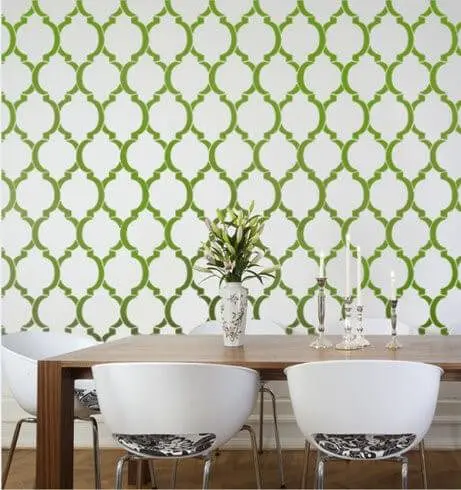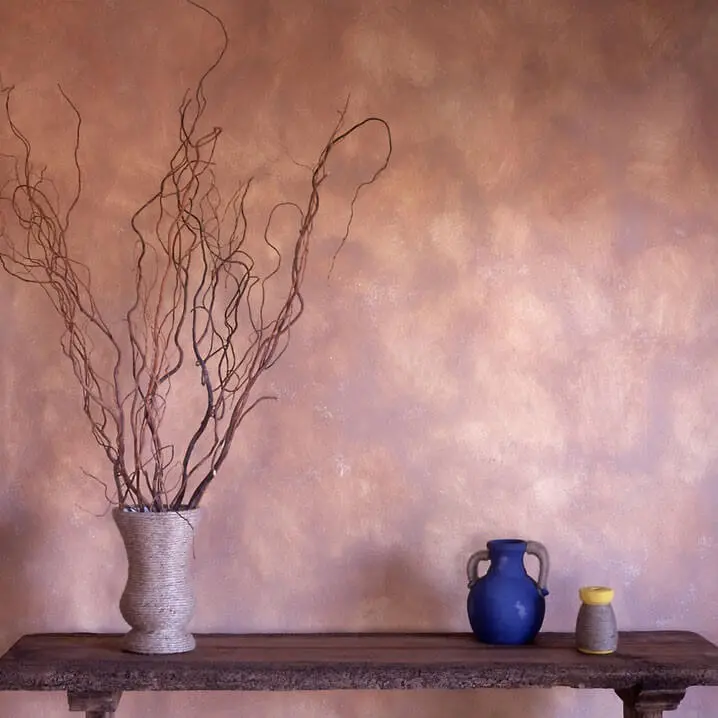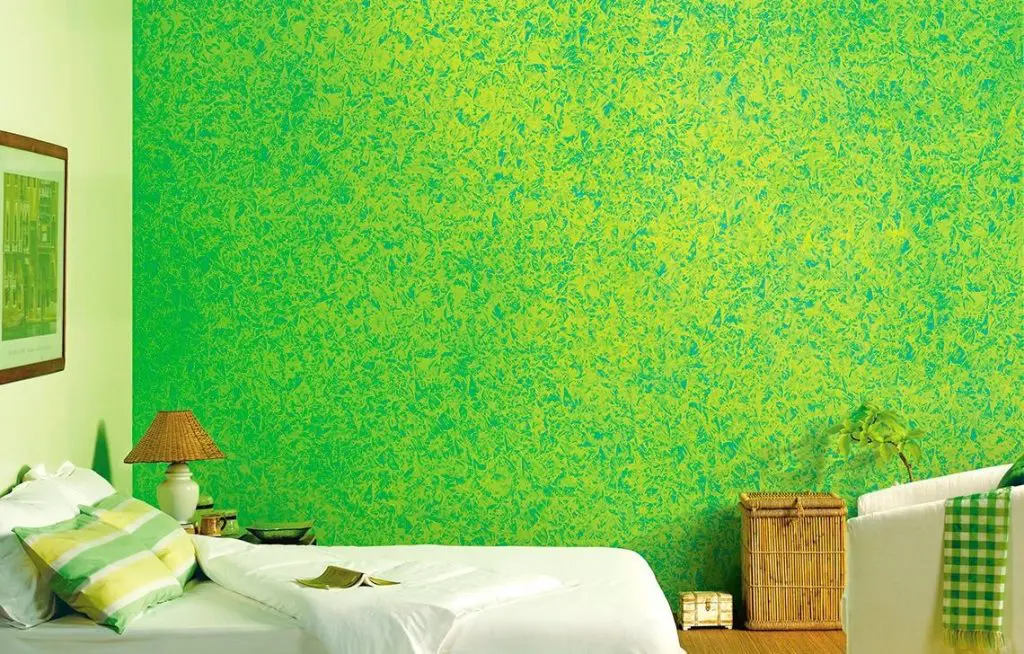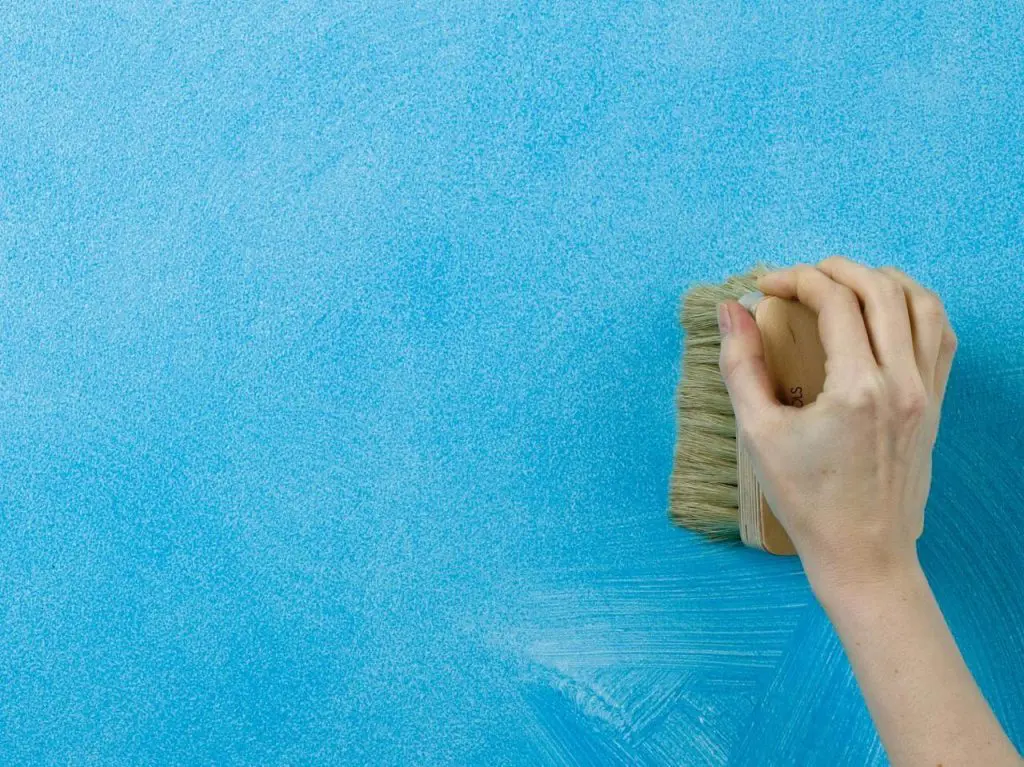When you’re doing the walls of your home, a creatively painted or decorated wall can act as the focal point and grab everyone’s attention. By just a little manipulation in the method of application of paint by use of simple tools, anyone can transform a normal wall to a textured one.
You can either go for a dramatic look by using contrasting colors or go for a more sophisticated texture by using matching shades or playing within the same color. Not only do these techniques lend character and depth to the wall, but can be a visual treat, enhancing the beauty of the whole room. Depending on your taste you can go for different colors, tools and textures to achieve the desired effects.
Different Techniques of Creating Texture Paints for Walls
1. Stenciling or Stamping Technique
When it comes to decorating walls using patterns and motifs, these are two of the easiest techniques. Both techniques involve repeating a pattern over and over, but the method used for both is different. As evident from its name, stencilling makes use of stencils which you can find at any local craft store, or better, make one yourself using some easy DIY techniques.
As for stamping, it requires a patterned 3D stamp which is dipped in paint and pressed onto the wall. Both these techniques give freedom to create intricate designs with clean edges.

2. Sponging Technique
If you’re looking to create a textured wall surface, sponging is one of the easiest techniques. In this technique, a sponge is used to apply color over a solid basecoat. A synthetic sponge creates a more even texture while a natural sea sponge creates an uneven texture.
While a shade of slightly different shade creates wonderful depth, contrasting shades can add a bold and dramatic look to make the wall stand out.

Also Read: Common Defects in Painting and Their Remedies
3. Colorwash Technique
Color wash is a very popular technique to create a subtle wash by blending colors. It requires paint that is mixed with glaze to thin it out, which is then applied to the wall. It can either be done using a single color or by mixing multiple colors to create different hues. The blended colors can give a very soft, sophisticated look to the wall.

4. Ragging / rag-Rolling Technique
Ragging is again an easy technique to create texture on the wall and in its procedure is similar to sponging, except that it uses a rag to apply the glaze to the wall. The wall is first washed with a base coat which is then textured with a slight or significant contrasting color.
The folds in the rag help give an uneven texture to the wall and can be modified again and again to generate a more prominent, uneven texture without much effort.
Rag rolling, which is similar to ragging, makes use of a rolled up rag which is then rolled over the surface of the wall to create a textured effect.

5. Stippling Technique
Stippling works to provide a subtle texture to the wall giving it a grainy, dotted type of look. For this, a stippling brush, one with sturdy bristles, is used. A base coat of paint is applied, and a stippling brush then used over it, either as an addictive or a take-away technique.
For the additive technique, the brush is first dipped in paint and then jabbed against the wall whereas in the take-away technique the dry brush is jabbed into the painted wall to take some glaze away.

Also Read: Checks and Tips for Internal and External House Painting
6. Frottage Technique
The method used for frottage is similar to ragging, the only difference being the use of paper or plastic sheet instead of cloth. The base paint is first applied followed by wrinkled paper, which upon pressing on the wall is further crinkled to get a more defined texture.
This method imparts a striking textured finish to the wall, and if done with use of complementary colors can result in a unique surface that stands out.

7. Dragging Technique
Dragging can be used to impart either a linear, continuous and even, or a flowy patterned type of texture to the wall. This is achieved by dragging a dry brush over coat of freshly applied paint on the wall. The movement pattern of the brush gives one a lot of liberty in terms of creating different effects.

While these are some of the common and popular methods to decorate a wall there can be numerous other ways to do the same. Experimenting with various tools and techniques can be used to achieve an array of results and create beautifully textured walls that are sure to stand out in your interiors.
– Anurima Singh






